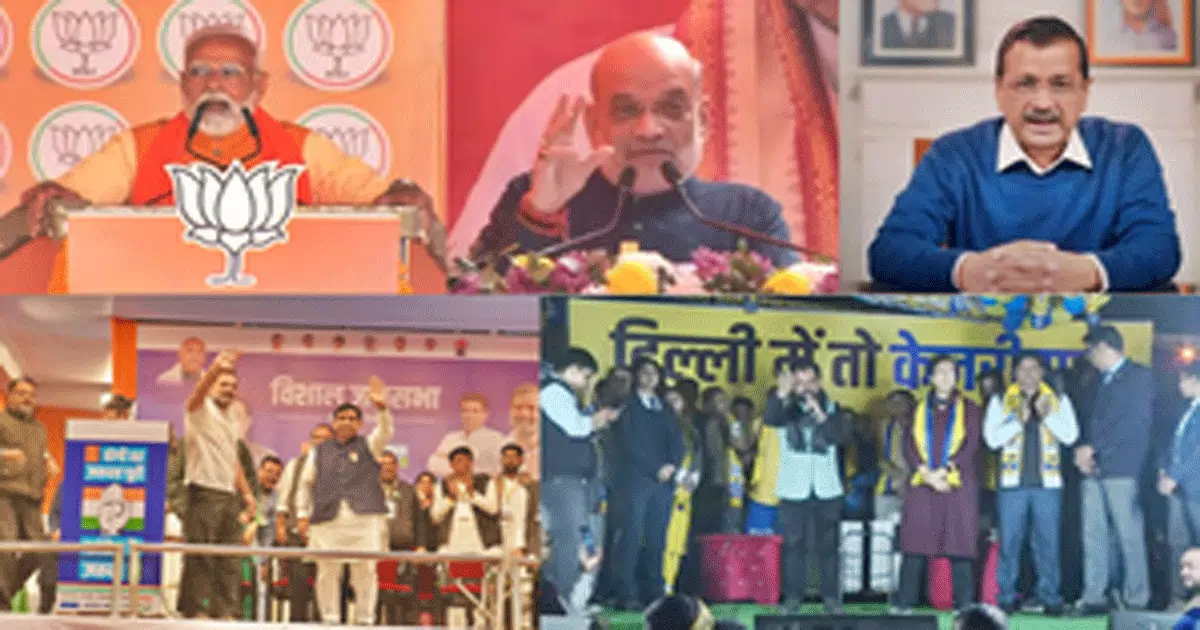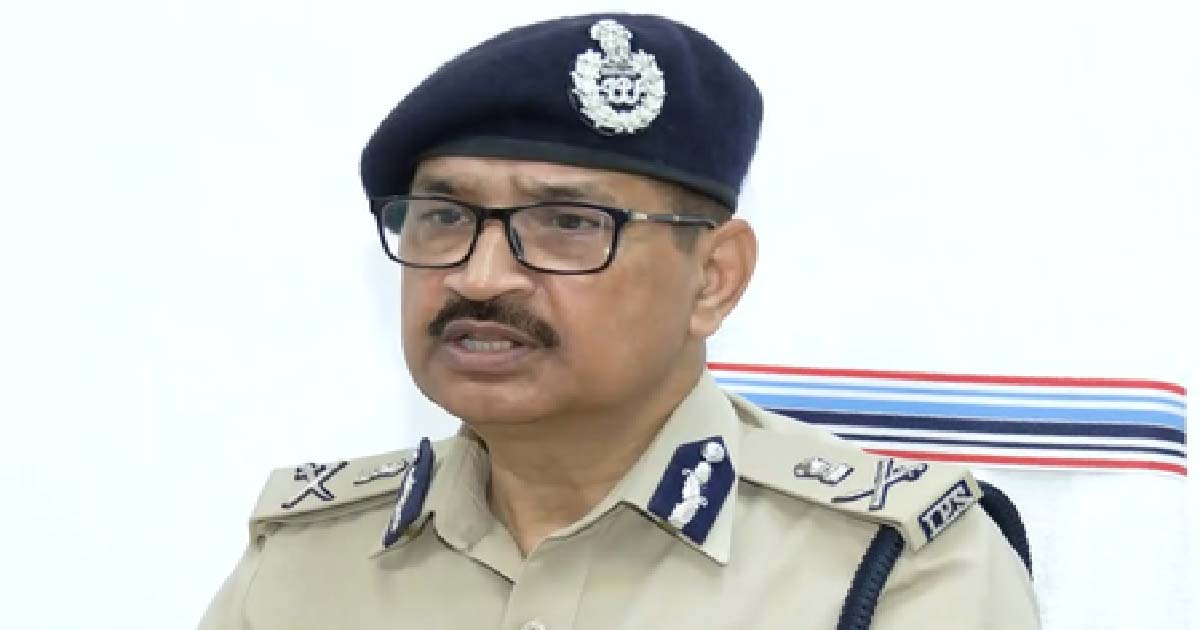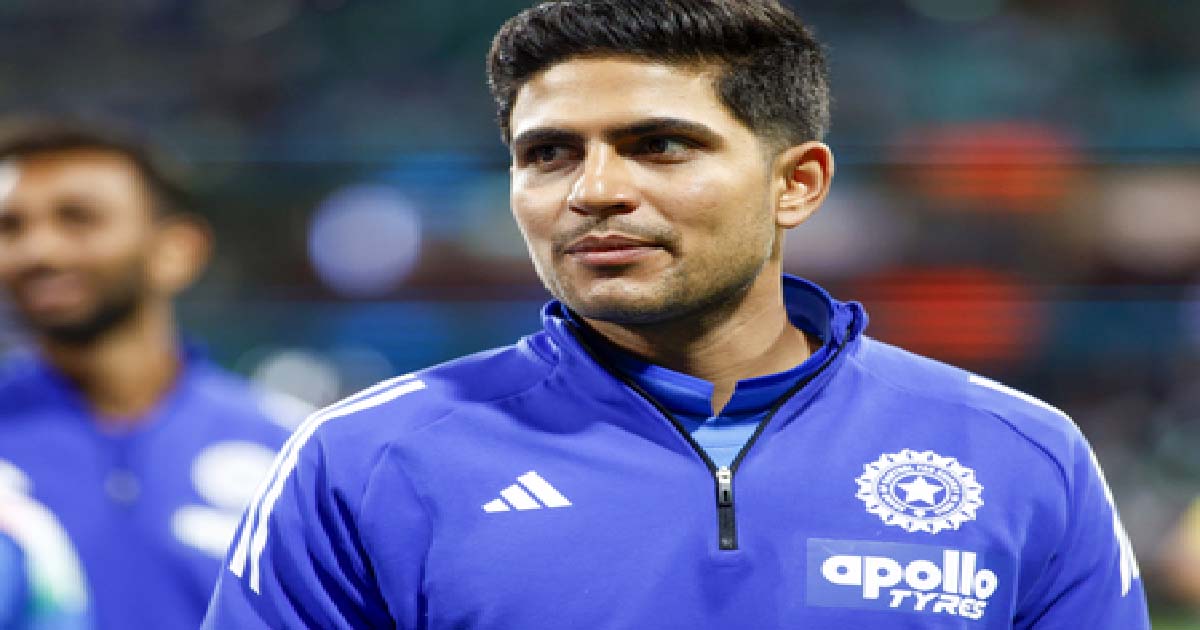National News
Over to voters: High-decibel campaign for Delhi election ends

New Delhi, Feb 3: Campaigning for the most hotly contested Assembly election in Delhi ever ended at 5 p.m. on Monday, drawing curtains on months-long, high-decibel electioneering replete with AI-generated memes, acerbic jibes and venomous barbs and a race to woo voters with freebies, including monthly doles to women and the youth.
The ruling AAP and rival BJP and the Congress engaged their star campaigners liberally with the pack being led by Prime Minister Narendra Modi and his Cabinet Minister Amit Shah, Rajnath Singh and Piyush Goyal, Congress leaders Rahul Gandhi and Priyanka Gandhi Vadra, former Chief Minister Arvind Kejriwal, Punjab CM Bhagwant Singh Mann and Chief Ministers of other BJP and Congress-ruled states.
Cricketer Harbhajan Singh and filmstar Shatrughan Sinha added star power to the AAP’s campaign.
Cash assistance for women, heated exchanges over alleged corruption revolving around liquor scam and ‘Sheesh Mahal’, joblessness, water supply and sewers, toxic air, polluted Yamuna and free health insurance dominated the discourse.
At the peak of the campaign, the campaign turned into a direct fight between ‘Modi ki Guarantee’, ‘Kejriwal ki Guarantee’ and ‘Congress ki Guarantee, with all three parties offering freebies to woo voters.
The ruling AAP and rival BJP and Congress also locked horns on several occasions over issues of alleged poll code violation, deletion of voters’ names, suspected Bangladeshis enrolled as voters and attempts to influence voters using lies and wrong information.
The hot seats of New Delhi of AAP National Convenor Arvind Kejriwal and Kalkaji seat of Chief Minister Atishi attracted special attention all through the campaign.
The fiercely campaign for the February 5 Assembly election has been defined by an unprecedented use of AI-generated spoofs and memes, sharp political jibes, and high-decibel roadshows.
The tech-driven campaign was supplemented by conventional methods like padyatra, corner meetings, handouts, newspaper ads, recorded phone calls by Kejriwal to voters and personal letters sent by Delhi BJP chief Virendra Sachdeva to voters.
On the final day of campaigning, the BJP organised 22 roadshows and rallies across Delhi while PM Modi issued a video on his interaction with students, as the party looked to end the AAP’s run of three successive electoral wins since 2013.
Similarly, the AAP’s last day dash saw Kejriwal holding public meetings in the Chhatarpur and Kalkaji Assembly constituencies and issuing videos alleging attempts to manipulate EVMs.
Throughout the campaign, the ruling AAP raised issues of poll code violation, alleged EC bias in favour of the BJP and wooed voters by showcasing its development model and offering 15 guarantees, including monthly financial assistance for women and others.
The ruling party also remained confident of securing a fourth straight term, banking on its governance model of free welfare schemes and blunting the rivals’ allegations of corruption and misgovernance.
The Congress, which ruled the capital for 15 years between 1998 and 2013, appeared energised, with a segment of Muslim voters showing faith in it in the recent civic elections.
On Monday, the Delhi election office imposed a prohibition on the display to the public of any election matter by means of cinematograph, television or other similar apparatus and holding public meetings during a period of “48 hours ending with hour fixed for conclusion of poll during the General Election to Legislative Assembly of NCT of Delhi-2025.”
All eyes on voting day will be on the voting turnout with the election department desperately trying to get more voters to polling booths.
The turnout in the 2020 Delhi Assembly election stood at 62.82 per cent, 4.65 per cent lower than 67.47 per cent in 2015. In 2013, the turnout was 66.02 per cent, 8.42 per cent higher than 2008’s 57.6 per cent.
Voting to pick a new 70-member Delhi Assembly will be held on February 5 and the result will be declared on February 8. In the outgoing House, the AAP has 62 candidates and the BJP has eight.
According to the data of the Delhi Chief Electoral Officer (CEO), 1.56 crore voters are eligible to cast their ballots across 13,766 polling stations. Among the total voters, 83.76 lakh are men, 72.36 lakh are women, and 1,267 are third-gender voters.
There are 699 candidates in the fray as compared to 672 in the 2020 poll.
The Election Commission has also introduced a Queue Management System (QMS) application for the first time in India, allowing voters to check real-time crowd levels at polling stations through the Delhi Election – 2025 QMS app.
Under the home voting facility for senior citizens and persons with disabilities, nearly 7,000 eligible voters cast their votes even before the pressing of the first EVM button on polling day.
Crime
Mumbai Crime: Serial Snatcher Who Targeted Women At D Mart Stores Arrested

A 53-year-old habitual offender was arrested by the MHB Police and identified as Bapi Ratan Bhattacharya. He was accused of stealing women’s purses and valuables from busy supermarkets repeatedly. Bhattacharya, dubbed a ‘serial snatcher’ by the police, was apprehended in Mira Road on Saturday after weeks of investigation.
In a statement given by the cops to Media, Bhattacharya would exploit the chaos of crowded shopping areas, especially popular D Mart outlets, to discreetly lift purses and bags placed in shopping trolleys. Most of his victims were women distracted while shopping. Investigators revealed that Bhattacharya had been involved in more than 10 similar thefts across various supermarket branches in Mumbai and nearby areas.
His latest crime came to light after a Dahisar West resident filed a complaint stating her purse had been stolen while she was shopping with her two-year-old son at D Mart, Kandarpada. The stolen bag contained cash, ATM cards, and important documents. Within minutes, ₹20,000 was withdrawn from her husband’s account using one of the stolen cards.
Following the complaint, police teams led by DCP Sandeep Jadhav (Zone XI), Senior Inspector Harish Gavli, and PSI Nilesh Patil analysed CCTV footage and used technical surveillance to trace Bhattacharya’s movements. The accused was later arrested from Mira Road. During interrogation, he confessed to multiple thefts carried out in a similar fashion across several D Mart branches.
An officer said, “More than ten cases have been registered against Bhattacharya across Mumbai and nearby police stations. Whenever a theft is reported at a supermarket, his name is the first to come up. We have already solved two pending cases after his arrest.”
The accused has been booked under relevant sections of the Bharatiya Nyaya Sanhita (BNS) and Information Technology Act, police said, adding that further investigations are underway to identify his other offences and potential accomplices.
National News
All preparations fully completed for Bihar polls: DGP Vinay Kumar

Patna, Nov 5: A day before the first phase of voting for the Assembly elections, Bihar Director General of Police (DGP) Vinay Kumar on Wednesday said that all preparations for the upcoming polls have been completed to ensure the polls are conducted peacefully and smoothly across the state.
DGP Vinay Kumar said the state police and administration are fully committed to maintaining law and order during the election process. He also appealed to the youth of Bihar to strengthen democracy by actively exercising their right to vote.
Speaking to Media, DGP Vinay Kumar said, “All preparations for the elections have been completed to conduct the polls peacefully. I also want to urge the youth of Bihar to come forward and make democracy stronger by using their voting rights responsibly.”
The DGP warned that anyone found involved in creating violence or any kind of disturbance during the polling process would face strict legal action.
“If anyone is found involved in violence or undesirable activity, they will not be spared. FIRs are being registered against all such offenders because no one is above the law,” he told Media.
Kumar further urged young voters not to be misled by anti-social elements.
“I request the youth not to fall into the trap of those who want to disrupt peace. Strengthen democracy by voting. The administration stands firmly with the people. If anyone faces any problem while casting their vote, they can directly contact us. Our helpline numbers have been made public for this purpose,” he added.
When asked about the FIR filed against Union Minister Lalan Singh for allegedly violating the Model Code of Conduct, the DGP said, “The Model Code of Conduct is known to everyone. If anyone disobeys it, an FIR is filed against them. The entire police and administrative team are working to ensure its strict implementation.”
Highlighting the preventive measures taken by the police, Kumar said, “If anyone attempts to create an undesirable situation or engage in violence, they will be arrested under preventive detention laws and released only after signing a bond. This year alone, around two lakh people have been arrested under such preventive measures.”
He added that special attention has been given to ensuring adequate deployment of security forces.
“Earlier, 1,500 companies of security personnel were allotted for the two phases of the elections. In the past six to seven days, an additional 150 companies of police personnel have been deployed, mainly in the districts going to polls in the second phase. The Dial 112 emergency service will remain fully functional, and citizens facing any issues can reach out immediately. Our social media monitoring cells are also active to track and counter misinformation,” he said.
The DGP also revealed that the police have taken strong action against those involved in criminal activities related to the elections.
“Anyone involved in criminal acts that attempt to disrupt the election process will face a speedy trial. In the past 25 to 30 days, around 800 accused individuals have been arrested. We will ensure that their cases are prioritised and convictions are achieved within two months. The Election Commission of India has also directed that such cases be given top priority,” he noted.
Reiterating his appeal to voters, Kumar said, “I appeal to every voter in the state to come out and vote without fear. Bihar is the mother of democracy, and it is our responsibility to protect its dignity. The youth must play a leading role in maintaining peace and harmony. If anyone notices anti-social activities, they should inform the authorities immediately. Strict action will be taken against those trying to disturb peace or spread violence.”
He further added that a few incidents of disturbances had been recorded, and the CID was investigating them.
“Such anti-social elements are being identified through videography. After the election, they will be sent to jail. Those who misuse weapons will face strict punishment. No one will be spared if they think they can escape by indulging in such acts,” Kumar added.
The voting for the Bihar Assembly elections will be held in two phases — November 6 and November 11, and the counting is scheduled for November 14. After the Election Commission of India announced the schedule for the 243-member Assembly, the Model Code of Conduct is currently in force across the state. Polling will be conducted in 121 constituencies in the first phase and 122 constituencies in the second phase.
National News
Watson hails Gill as ‘ridiculously talented’ batter ahead of Gold Coast T20I

Gold Coast, Nov 5: Former batting great Shane Watson has praised India opener Shubman Gill for maintaining consistency in his batting and stated it won’t take him long to adapt across different formats. He described the opener as a ‘ridiculously talented’ batter with amazing technique.
While Gill remains a key figure across formats, his T20I performances since returning to the format in September 2025 reveal a worrying trend, as he has scored just 170 runs in ten innings at an average of 24.14 and a strike rate of 148.24.
In the ongoing Australia tour, he is struggling, having scored 37 not out, 5, and 15 in the first three games of the five-match series.
Speaking to reporters here on Wednesday, Watson reflected on how challenging it is for a modern team batter to go through the phase of frequently changing formats and said, “It definitely is a challenge and the more you do it, the better you get at really understanding the little adjustments that you have to make to your technique, to your game plan, your mindset around each format to be able to then get into the best version of you every time you have to make that adjustment.”
The fourth T20I will be a historic game, as it will be the first time India and Australia play at the Carrara Oval (formerly known as the People’s First Stadium) in Gold Coast.
Watson expressed excitement about this stadium hosting a major event and said, “It’s an amazing opportunity for the Gold Coast to be able to show off its incredible natural beauty. For the Indian team to be able to come here, for the Gold Coast to be able to get a game of this calibre, is something very special to the Gold Coast community. So I’m sure the players and the Indian fans who have made their way here will certainly enjoy the tournament.”
-

 Crime3 years ago
Crime3 years agoClass 10 student jumps to death in Jaipur
-

 Maharashtra1 year ago
Maharashtra1 year agoMumbai Local Train Update: Central Railway’s New Timetable Comes Into Effect; Check Full List Of Revised Timings & Stations
-

 Maharashtra1 year ago
Maharashtra1 year agoMumbai To Go Toll-Free Tonight! Maharashtra Govt Announces Complete Toll Waiver For Light Motor Vehicles At All 5 Entry Points Of City
-

 Maharashtra1 year ago
Maharashtra1 year agoFalse photo of Imtiaz Jaleel’s rally, exposing the fooling conspiracy
-

 National News1 year ago
National News1 year agoMinistry of Railways rolls out Special Drive 4.0 with focus on digitisation, cleanliness, inclusiveness and grievance redressal
-

 Maharashtra12 months ago
Maharashtra12 months agoMaharashtra Elections 2024: Mumbai Metro & BEST Services Extended Till Midnight On Voting Day
-

 National News1 year ago
National News1 year agoJ&K: 4 Jawans Killed, 28 Injured After Bus Carrying BSF Personnel For Poll Duty Falls Into Gorge In Budgam; Terrifying Visuals Surface
-

 Crime1 year ago
Crime1 year agoBaba Siddique Murder: Mumbai Police Unable To Get Lawrence Bishnoi Custody Due To Home Ministry Order, Says Report












